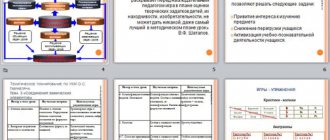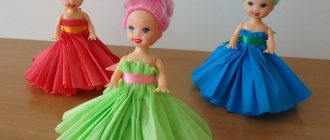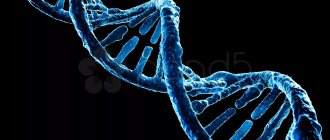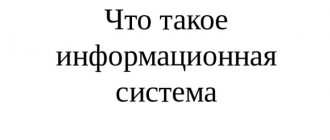Lesson plan:
Like components of a construction set, the atoms are connected to each other. And no matter how hard you try, you can only connect one block to a single block. The part has 4 cells, can hold no more than four. This principle continues in chemistry. The number of free cells is determined by the valency of the atoms of the elements.
The result of the interaction of atoms is the production of substances. The types of chemical bonds of atoms depend on the nature of the constituent elements.
Metals are distinguished by a small number of electrons at the outer level compared to non-metals and a lower electronegativity value. Now our task is to remember how EO changes in the periodic table or use the “Relative electronegativity” table. The more active the nonmetal, the higher it is, and this indicates that this element, when forming a bond, will take electrons.
There are millions of substances. These can be simple substances: metals iron Fe, gold Au, mercury Hg; non-metals sulfur S, phosphorus P, nitrogen N2. So are complex substances: H2S, Ca3(PO4)2, (C6H10O5)n, protein molecules, etc. The combination of elements that make up the substances determines what types of bonds will exist between them.
Covalent bond
Nonmetals are in the minority among all elements. But having some structural features and the ability to have variable valency, the number of compounds built by these elements is impressive.
To have an idea of how atoms are connected, let's start with the hydrogen molecule H2.
Let's give free rein to our imagination, imagine what cannot be seen. Let's say that we picked up two identical parts that look like this:
There is only one combination of their connection, and there will be one common link between them. Let's move from our imagination to molecules. Let's imagine that we have two hydrogen atoms in front of us and our task is to combine them into a molecule. Mentally spin the parts so that they come together, you need to put them on top of each other, tying them in a certain place. The dots next to each other indicate how many electrons are located on the outer layer.
Source
Hydrogen atoms, as parts, are connected by one bond, so the valency in this case of each of them will be equal to I. But the oxidation state will be equal to 0, since the substance is formed by an element with the same electronegativity value.
Let's consider how a molecule of the most common gas on our planet, nitrogen N2, is formed.
Nitrogen has 3 unpaired electrons. It's like taking two parts of a view and connecting them.
Thus, nitrogen is trivalent, and the degree
oxidation still remains equal to 0. Due to the shared electron pair, nitrogen completes the outer layer 2s22p6.
A covalent bond in a molecule consisting of one type of atom, namely non-metals, is called non-polar.
During the construction of a molecule, the number of electrons tends to complete. Let's consider how the O2 molecule is formed. Each atom lacks 2 electrons and they compensate for this deficiency with a common electron pair.
We also note that the oxidation state is 0, because the atoms are equal partners, and their valency is II.
A covalent chemical bond formed by different nonmetals is called polar.
Let's take two non-metallic elements Hydrogen and Chlorine. Let us indicate the electronic formulas of the outer layer.
Н 1s1
Cl 3s2 3p5
Having analyzed the values, E(H) < E(Cl), we come to the conclusion that in order to accept the noble gas configuration, chlorine will attract the only electron of hydrogen.
The diagram of a covalent bond formed by different elements is written in this form.
It is so important to note that in this situation Cl and H will not be equal partners, since the total electron density is concentrated in Cl. Hydrogen, in an unequal battle, loses 1 electron to chlorine, which has as many as 7 of them. Hydrogen acquires a positive charge, chlorine – a negative one. The valencies of H and Cl are equal to I. At that time, the oxidation states will be H+Cl−.
This type of formation of compounds occurs through an exchange mechanism. This means that in order to obtain a complete configuration, more electronegative ones accept electrons, less electronegative ones donate them, but at the same time there is a common electron pair.
Nonmetals form not only binary compounds, but may also contain three or more elements. For example, the molecule of carbonic acid H2CO3 consists of 3 elements. How do they connect to each other? Electronegativity increases in the series EO (H) <EO (C) <EO (O). Let's determine the oxidation state of each element. H+2C+4O−23. This means that oxygen will attract electrons from carbon and hydrogen. Schematically, this can be written in the following form.
To construct the structural formula, write carbon in the center. It has 4 unpaired electrons. Since there are 3 oxygen atoms, each of them can accept 2 electrons. Then, through simple calculations, we see that 4 electrons will come from C and one from each H. We check our calculation, taking into account the neutrality of the molecule, we count the positive and negative charges.
Н2+С+4О3−2 (+1 ∙ 2) + (+4 ∙ 1) + (-2 ∙ 3) = 0
There is another mechanism of covalent bonding, called donor-acceptor.
To understand this principle, let us describe the formation of a molecule that has a not entirely pleasant, sharp, suffocating odor, ammonia NH3.
H 1s1
N 2s2 2p3
Of the 5 electrons at the disposal of the N atom, only 3 are bonded. The valency of the N atom acquires the value III. In this case, the oxidation state is N−3 (having pulled 3 electrons from each H atom and becomes negative), hydrogen, on the contrary, having performed a “noble act” by donating an electron, acquires a positive charge H+. Two electrons are not involved in any way, they are highlighted in red. They are able to settle in a free cell of the H+ ion. This place will be occupied by nitrogen electrons, which are indicated in red. The ammonium cation is formed according to the donor-acceptor mechanism.
The previously unused “red” electrons N are “populated” in the empty s-orbital belonging to the hydrogen cation. The ammonium ion has 3 bonds that occur through the exchange mechanism, as well as one through the donor-acceptor mechanism. This is why NH3 easily interacts with acids and water.
§ 6. Hydrogen chemical bond
Chapter first. Hydrocarbons and their natural sourcesBy considering the hydrogen bond, we complete our introduction to the types of chemical bonds. And this is no coincidence.
Firstly
, a hydrogen bond is a special case of intermolecular interaction. The energy of such a bond is approximately 10 times less than that of covalent and ionic chemical bonds, and is only 4-40 kJ/mol, i.e., it fits into the energy characteristic of intermolecular forces.
Secondly
, consideration of the hydrogen bond will allow us to compare this chemical bond with other types and thereby generalize our ideas about the nature of chemical bonds in general.
Third
, this is the most significant chemical bond on our planet, because it determines the structure of compounds that are carriers of life on Earth (proteins and nucleic acids) and are responsible for storing and reproducing hereditary information of living organisms.
All previously discussed types of chemical bonds ( remember which
) have names based on the following chemical concepts: “ions”, “atoms”, “metals”. And a hydrogen bond is a specific term associated with a specific chemical element - hydrogen. Obviously, this is due to the structural feature of the hydrogen atom, which has a single valence electron. By participating in the formation of a chemical bond, this electron exposes the tiny nucleus of the hydrogen atom, which is nothing more than an ordinary proton.
The formation of intermolecular hydrogen bonds explains the fact that even substances with small relative molecular weights under normal conditions are liquids (water; alcohols - methanol, ethanol, propanol; carboxylic acids - formic, acetic) or easily liquefied gases (ammonia, hydrogen fluoride).
The mechanism of hydrogen bond formation is the electrostatic attraction of a hydrogen atom, which has a partial positive charge, and an oxygen atom (fluorine or nitrogen), which has a partial negative charge.
The donor-acceptor interaction between the almost free orbitals of hydrogen atoms and lone electron pairs of oxygen atoms (fluorine or nitrogen) also contributes to the formation of a hydrogen bond. For example, water is associated into a liquid due to hydrogen bonds that arise between dipole molecules.
In liquid water, hydrogen bonds form between many molecules. But carboxylic acid molecules are most stable in the form of dimers, also formed by hydrogen bonds:
The alchemical rule of dissolving “like in like” is explained by the formation of hydrogen bonds between solvent molecules and solute molecules.
Thus, methyl and ethyl alcohols, ethylene glycol and glycerin, acetic and formic acids are unlimitedly soluble in water, for example:
The ability of some gases, such as ammonia, due to the formation of hydrogen bonds
easily liquefy (at a pressure of 0.9 MPa and room temperature) and return to a gaseous state with the absorption of heat, allowing them to be used as refrigerants in industrial refrigeration units (Fig. 30).
Continued >>>
Ionic bond
An ionic chemical bond is borderline covalent polar. They differ in that substances in which a covalent bond is localized are characterized by the existence of a shared electron pair, while ionic bonds are characterized by complete donation of electrons. The consequence of recoil is the formation of charged particles - ions.
Calculations will help determine the type of connection. If the difference in electronegativity values is greater than 1.7, then the substance is characterized by an ionic bond. If the value is less than 1.7, then the characteristic polar bond. Let's consider two substances NaCl and CaC2. Both of them are formed by a metal (Na and Ca) and a non-metal (Cl and C). However, in one case the bond will be ionic, in the second it will be polar covalent.
It is a tenet of physics that opposites attract. Those. positive ions attract negative ones and vice versa.
Let us assume that it is necessary to obtain a substance from potassium and fluorine atoms. Each atom strives to acquire the noble gas configuration. This can be achieved in two ways by giving or accepting electrons, thereby forming ions with the desired configuration.
It is much easier for a potassium atom to give away 1 electron than to take away 7 from fluorine. By accepting 1 electron, F has a completed level.
Similarly, potassium, which easily gave up its electron, its cation accepted the electronic formula of argon.
Calcium is a divalent metal, so two fluorine atoms are needed for interaction, since it can only accept one electron. The scheme for the formation of an ionic bond is as follows.
This type of bond is localized in all salts, between the metal and the acid residue. In the above example for carbonic acid, the acidic residue will be CO32−, if sodium atoms are placed instead of hydrogen, then the bond formation scheme looks like this.
It should be noted that an ionic bond will exist between Na and O, and a polar covalent bond between C and O.
Metal connection
Metals exist in different colors: black (iron), red (copper), yellow (gold), gray (silver), and melt at different temperatures. However, they are all united by the presence of shine, hardness, and electrical conductivity.
A metallic bond has features similar to a nonpolar covalent bond. Metals are poor in electrons at the external level, therefore, when forming a bond, they are not able to attract them to themselves; they are characterized by recoil. Since the atomic radius in metals is large, this makes it easy for electrons to break away, forming cations.
Me0 - ne = Men+
Electrons are constantly moving from atom to ion and vice versa. The cations themselves can be compared to icebergs surrounded by negative particles.
Metal connection diagram
Lesson summary: Metallic chemical bond
Chemistry lesson in 8th grade on the topic “Metallic chemical bond” (using critical thinking technology
).
Lesson objectives:
Educational
:
- introduce students to metal bonding, know the definition of metal bonding;
- be able to explain the properties of metals based on the type of chemical bond, find similarities and differences between them and covalent and ionic bonds;
Educational:
- creating conditions for developing the ability to independently acquire knowledge using various sources of information;
- development of critical thinking, memory, attention, observation.
Educational:
fostering positive learning motivation, correct self-esteem and a sense of responsibility.
Lesson type: -
learning new material.
Equipment:
PC, media projector, on the board - formulas of substances on magnets, on each table for students - a mini-lecture, samples of metals and alloys, sheets of blank paper, a form with assignments.
During the classes
1. Call stage -
Good afternoon guys! Sit down. I'm glad to see you again in chemistry class.
— I am sure that our work will be fruitful. You will all be able to achieve positive results in your academic work. You are all successful. But you have to work for this. As Plautus, the Roman playwright, said: “Whoever wants to eat the kernel of a nut must crack its shell” (slide 1)
COMPOSITION OF A CLUSTER (BEAM)
Tasks of this stage:
- students’ independent determination of directions in the study of the topic, those aspects of it that they would like to discuss and comprehend;
- independent updating on the topic and awakening cognitive activity;
at this phase of work, collective opinion and knowledge about this concept are heard and residual knowledge is identified. At this stage, knowledge assessment is not given. But the cluster has not yet been erased from the board. The teacher asks the students the question: “Do your ideas correspond to scientific concepts?” and sets a learning task.
Teacher: What are we studying with you over the course of several lessons? Students: Chemical bond. Teacher: What do we know about chemical bonds? Students: Types of chemical bonds, their formation mechanisms. Teacher: What types of chemical bonds have we studied? Students: Ionic and covalent: nonpolar and polar. Teacher: What chemical bond is called ionic? Covalent? Which bond is called covalent nonpolar and polar? Students define types of communication. Teacher: Guys, the formulas of substances are given on the board, distribute them by type of bond. Substance formulas: NaCl, O2, HCl, Na, K2S, H2S, Mg, H2, Al. In which substances did you find it difficult to determine the type of chemical bond? What kind of substances are these, determine them using the periodic table? What if a simple metal substance is formed? What type of bond can there be in these substances?
(assumption: metal)
Right. And the topic of the lesson today: “Metallic chemical bond” (Slide 2) (written in notebooks)
Chemical bond
↓
Types of chemical bond
↙ ↓ ↘
? Ionic Covalent
Metal ↙ ↘
Non-polar Polar Teacher: Guys, you have samples of metals and alloys on your tables. Look at them carefully. – You already know how atoms of metals and nonmetals interact with each other, as well as atoms of nonmetals with each other. – Today we will look at how metal atoms will interact with each other. Why do metals exist in the form of an ingot, piece or metal product? – What holds metal atoms together? – What properties do metals have and what do they depend on – you and I must answer in this lesson (Slide 3) – The purpose of our lesson is: (Slide 4)
- Form a concept of metal bonding.
- Study the mechanism of bond formation.
- Get acquainted with the properties of metals.
2. CONSIDERATION STAGE
Students are presented with new information that they must practice.
Tasks of this stage:
- organizing active work with information, linking it with existing knowledge
- actively monitor your understanding (each)
This technology is associated with text and writing. Text requirements: 7-10 minutes of reading. A text is a sequence of meaningful statements conveying information, united by a common theme, and possessing the properties of coherence and integrity. The text must be adapted. While reading the text, discuss in pairs, interrogate.
Mini-lecture.
Metals are elements of groups 1-3 of the main subgroups, as well as all secondary subgroups of the periodic table. They conduct electricity well. What is this connected with? To answer this question, it is necessary to establish the features of their structure. That's what we'll do today.
Metal atoms at the outer energy level have a small number of electrons, so they tend to give them away. It's good if there is a non-metal that will accept them. And if he is not there, what then?
In a piece of metal, ingot or metal product, the metal atoms give up external electrons and send them into this piece, ingot or product, turning into positive ions. “Detached” electrons move from one ion to another, temporarily recombine with them into atoms, and are detached again. And this process occurs continuously. In a piece of metal there are either atoms or ions. They are called atom ions. There are also free electrons here, which can act as carriers of electrical charges.
And the scheme for the formation of a metallic bond can be written as follows: Me0 – ne-←→ Men+ atoms metal ions metal
, where n –
the number of external electrons involved in bond formation.
This type of bond is observed in metals - simple substances and alloys. So metal
is called the bond in metals and alloys between atom-ions through shared external electrons.
The metallic bond has some similarities with the covalent bond, as it is based on the sharing of outer electrons. However, when a covalent bond is formed, the outer unpaired electrons of only two neighboring atoms are shared, while when a metallic bond is formed, all atoms participate in the sharing of these electrons. That is why crystals with a covalent bond are fragile, but with a metal bond, as a rule, they are hard, ductile, electrically conductive, thermally conductive and have a metallic luster. Questions for discussion:
1.What substances are characterized by a metallic bond? 2. What particles are involved in its formation? 3.How is a metallic bond formed? 4. Write down in your notebooks a diagram of the formation of a metallic bond. 5.What properties are characteristic of metals? 6.In the following sentences, insert the missing words and expressions: “The connection is in …………. and ……… between …………. through ……………………. electrons are called …………………….(write in your notebooks)
3. REFLECTION STAGE – CONSIDERATION
Teacher: So, guys, let's return to our diagram. What type of chemical bond is characteristic of these substances? What particles are involved in the formation of this bond? This process can be represented as follows:
(slide show 5-8 of the presentation )
Define a metal chemical bond. (slide 9) And now I propose to consolidate the material studied by working with cards. To organize your work, use an algorithm. Time to work is 4-5 minutes.
Card on types of chemical bonds
| Option I | Option II | Option III | Option IV | |
| 1 | CO2 | O2 | NaCl | Ca |
| 2 | K2O | NO | TO | Br2 |
| 3 | H2 | Na | SiH3 | Ca2P3 |
| 4 | Mg | KI | N2 | NH3 |
Algorithm for working with a card
- From the formulas of substances proposed in the card, choose the formula of a simple metal substance.
- Write down a scheme for the formation of a metallic chemical bond for the selected substance.
- Discuss your results with your seatmate.
- Let's check the results. Those who wish to do so work at the board. (work at the board)
— Let's check that the task was completed correctly. (show slide 10)
— What will happen to aluminum? Everyone try it on their own in a notebook, and ... do the work at the board.
— Let’s check the result (slide demonstration 11)
— We examined the features of metallic bonds. Guys, look again at the samples of metals and alloys given to you. What common properties do they have? (slide12) What do you think causes these properties? That's right, a metal bond, namely the structure of the atom. That is, knowing the structure of an atom we can determine the properties of a substance.
Well done. I agree (or disagree) with you.
— To summarize the work on the topic, I suggest you complete the task in test form to check how you have mastered the lesson material. (individual work on cards with a test task)
Test
1. Chemical bond -
a) interaction between atoms b) interaction between molecules c) interaction between electrons
2. The bond in metals and alloys between atom-ions through shared external electrons is called
a) covalent b) ionic c) metallic
3. A positively charged ion is
a) cation b) anion c) electron
4. A substance whose molecule is formed through a metal bond:
a) H2 – hydrogen b) Na – sodium c) H2S – hydrogen sulfide.
5) Scheme of formation of a metallic chemical bond:
a) E0 – ne- → En+ b) E0 + ne- → En- c) E0 – ne-←→ En+
(check on slide)
- Exchange your work and check the tasks are completed correctly using the key on the screen.
- Who could answer all the questions? Well done!
- This concludes our acquaintance with metallic connections.
Write down the homework assignment. (slide)
- And at the end of the lesson, try to analyze your work at will, starting with the words: I learned - I mastered - I find it difficult - I couldn’t - (slide)
- You did great today. Everyone was able to move one step higher in their knowledge of chemistry. Cracked the nut shell. I thank you for your work. Goodbye.
Hydrogen bond
Non-metal elements of period II (N, O, F) have a high electronegativity value. This affects the ability to form a hydrogen bond between the polarized H+ of one molecule and the anion N3-, O-2, F-. A hydrogen bond has the ability to bring two different molecules together. For example, if you take two water molecules, they are connected to each other due to the H and O atoms.
A hydrogen chemical bond is depicted by ...... dotted lines. By connecting with each other, molecules play and find an important role in living organisms. With the help of hydrogen bonds, the secondary structure of the DNA molecule is built.





